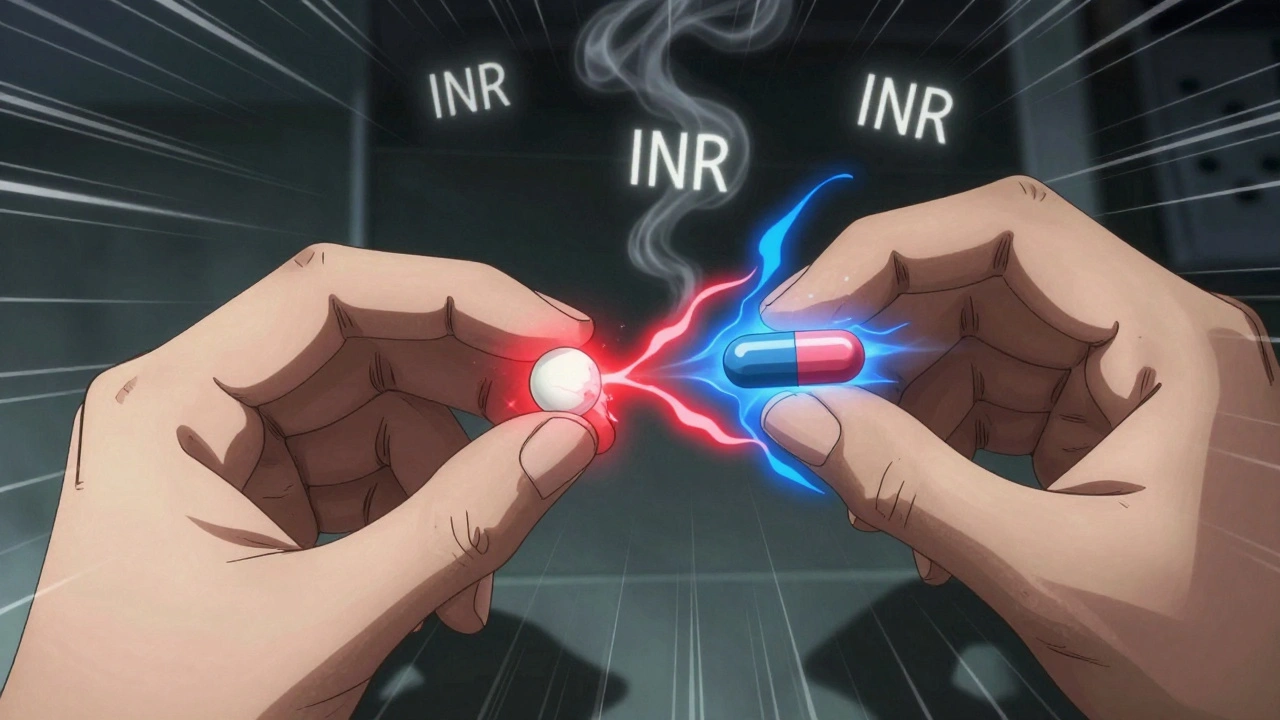How Carbidopa‑Levodopa‑Entacapone Improves Quality of Life in Parkinson’s Disease

Parkinson's Quality of Life Estimator
This estimator calculates potential quality of life improvements with carbidopa-levodopa-entacapone based on clinical evidence showing:
- 30-40% reduction in "off" periods
- 4-6 point improvement in PDQ-39 score (where lower scores indicate better quality of life)
Estimate Your Improvement
Estimated Improvements
"Off" time reduction: 0%
PDQ-39 score improvement: 0 points
Expected new PDQ-39 score: 0
Living with Parkinson’s disease means facing daily motor symptoms, unpredictable "off" periods, and the constant worry that medication won’t keep up. One combination drug aims to smooth that roller‑coaster: carbidopa-levodopa-entacapone is a fixed‑dose tablet that blends three agents to extend levodopa’s effect and reduce motor fluctuations. This article walks through how the trio works, what clinical trials say about patients’ quality of life, real‑world experiences, and practical tips for clinicians and caregivers.
What is Parkinson’s disease?
Parkinson's disease is a progressive neurodegenerative disorder characterized by loss of dopamine‑producing cells in the substantia nigra. The dopamine shortage leads to tremor, rigidity, bradykinesia, and postural instability. Over time, patients also develop non‑motor symptoms like sleep disturbances, mood changes, and cognitive decline. Managing motor symptoms while preserving quality of life (QoL) is the primary therapeutic goal.
Why combine carbidopa, levodopa, and entacapone?
Each component tackles a different bottleneck in dopamine delivery:
- Levodopa is the precursor that crosses the blood‑brain barrier and is converted into dopamine where it’s needed.
- Carbidopa inhibits peripheral dopa‑decarboxylase, preventing levodopa from turning into dopamine outside the brain. This means more levodopa reaches the CNS and side‑effects like nausea drop.
- Entacapone blocks catechol‑O‑methyltransferase (COMT), a secondary enzyme that also breaks down levodopa in the periphery. By slowing this pathway, entacapone prolongs levodopa’s plasma half‑life, flattening peaks and troughs.
The result is a smoother dopamine supply, fewer "off" episodes, and reduced need for frequent dosing.
Clinical evidence: does the combo actually improve QoL?
Several randomized controlled trials (RCTs) have measured both motor outcomes and patient‑reported QoL. The most cited is the Phase III Stalevo trial, which enrolled 660 patients with motor fluctuations. After 12 weeks, participants on the triple combo showed a mean improvement of 5.1 points on the Unified Parkinson’s Disease Rating Scale (UPDRS) Part III, compared with a 3.2‑point gain on standard levodopa/carbidopa.
Quality of life was captured with the Parkinson’s Disease Questionnaire‑39 (PDQ‑39). PDQ‑39 scores fell from 38.5 to 31.2 (lower scores = better QoL) in the combo arm, while the control arm improved only to 35.8. The difference (≈4.6 points) exceeds the established minimally important change, indicating a perceptible benefit.

Real‑world patient stories
Beyond the lab, clinicians report noticeable changes in daily functioning. Jane, a 68‑year‑old retired teacher from Brisbane, described her "off" periods as "hours of feeling completely stuck" before switching to the triple tablet. Within a month, she could resume gardening twice a week and report fewer nighttime awakenings.
Mark, a 55‑year‑old software engineer, highlighted the dosing convenience: "Instead of three separate pills, I take one Stalevo before breakfast and another in the evening. It’s a mental load off my mind, and I no longer have that dreaded "wearing‑off" feeling after lunch. My PDQ‑39 score dropped by six points in three months."
These anecdotes echo the trial data: fewer dosage adjustments, steadier symptom control, and measurable QoL gains.
How does the combo stack up against other regimens?
| Feature | Stalevo (Carbidopa‑Levodopa‑Entacapone) | Levodopa/Carbidopa alone | Levodopa + MAO‑B Inhibitor (e.g., Selegiline) |
|---|---|---|---|
| Mechanism | COMT inhibition + peripheral dopa‑decarboxylase block | Peripheral dopa‑decarboxylase block only | MAO‑B inhibition in CNS |
| Peak‑to‑trough fluctuation | Reduced (longer half‑life) | Higher peaks, more troughs | Modest reduction, but limited to central metabolism |
| Typical "off" time reduction | ≈30‑40 % | Baseline | ≈15‑20 % |
| Impact on PDQ‑39 | Mean ↓4‑6 points | Minimal change | ↓1‑2 points |
| Common side effects | Nausea, dyskinesia, urine discoloration | Nausea, orthostatic hypotension | Insomnia, headache |
| Cost (2025 AUS) | $85/month (PBS concessional) | $55/month | $70/month |
For patients who struggle with frequent "off" episodes despite optimized levodopa/carbidopa dosing, adding a COMT inhibitor like entacapone offers the greatest QoL boost. MAO‑B inhibitors are useful earlier in disease or as adjuncts when dyskinesia is a concern.
Practical prescribing tips
- Start low, go slow: Begin with the lowest Stalevo dose (e.g., 100 mg/25 mg/200 mg) and titrate every 3‑7 days based on symptom control and side‑effects.
- Monitor for dyskinesia: Because entacapone extends levodopa exposure, patients may develop involuntary movements sooner. Adjust levodopa portion if needed.
- Watch urine color: Entacapone can turn urine a dark orange. Reassure patients this is harmless.
- Renal function: Dose‑adjust in severe renal impairment (eGFR < 30 mL/min) - consider splitting the dose or using a levodopa/carbidopa formulation alone.
- Drug interactions: Avoid non‑steroidal anti‑inflammatory drugs (NSAIDs) that may increase bleeding risk when combined with antiplatelet therapy.
Regular follow‑up using the UPDRS and PDQ‑39 provides objective and subjective checkpoints to gauge whether QoL is truly improving.

Potential downsides and how to mitigate them
While the combo offers clear benefits, it isn’t a magic bullet. Common complaints include nausea, dry mouth, and the aforementioned dyskinesia. Strategies include:
- Co‑prescribe anti‑emetics (e.g., ondansetron) during the initial titration phase.
- Reduce the levodopa component by 25 mg if dyskinesia spikes, while keeping the entacapone dose stable.
- Encourage adequate hydration and balanced meals to lessen GI upset.
- Evaluate vitamin B12 levels; entacapone can interfere with folate metabolism in rare cases.
Patient education is crucial. When patients understand why they might see brighter urine or a slight increase in movement, adherence improves.
Future directions: next‑generation COMT inhibitors
Research is underway on newer COMT inhibitors with longer half‑lives and fewer side‑effects, such as opicapone. Early phase trials suggest similar QoL benefits with once‑daily dosing. If approved, clinicians may soon have an even simpler regimen that still tackles motor fluctuations.
Key takeaways
- The triple tablet blends levodopa, carbidopa, and entacapone to extend dopamine availability, reducing "off" time.
- RCTs and real‑world data consistently show a 4‑6‑point improvement on PDQ‑39, reflecting meaningful quality‑of‑life gains.
- Compared with levodopa/carbidopa alone, Stalevo offers the largest reduction in motor fluctuations and the greatest QoL impact.
- Start low, monitor UPDRS and PDQ‑39, and adjust dosing to balance dyskinesia risk.
- Emerging COMT inhibitors may soon simplify therapy further.
How quickly can patients expect to feel a difference after starting carbidopa‑levodopa‑entacapone?
Most people notice smoother motor control within 1‑2 weeks, though the full quality‑of‑life benefit may take 4‑6 weeks as the dose stabilizes and side‑effects subside.
Is Stalevo safe for older adults with mild kidney disease?
Yes, but dose reductions are recommended when eGFR falls below 30 mL/min. Regular renal monitoring and symptom checks are essential.
Can the combination replace other Parkinson’s medications?
It’s usually added to an existing levodopa regimen to tackle fluctuations. It doesn’t replace dopamine agonists or MAO‑B inhibitors, which may still be needed for non‑motor symptoms.
What should patients do if they notice dark urine?
Reassure them that urine discoloration is a benign effect of entacapone. Staying well‑hydrated can lessen the intensity.
How does entacapone differ from tolcapone?
Both are COMT inhibitors, but tolcapone penetrates the brain and carries a higher risk of liver toxicity, requiring monthly liver‑function tests. Entacapone stays peripheral, making it safer for long‑term use.






Comments
Sakib Shaikh
October 21, 2025 AT 19:05Yo fam, that carbidopa‑levodopa‑entacapone combo is basically the rockstar of Parkinson meds-three guns in one hot‑loaded tablet, blasting those dreaded “off” waves like a fireworks show on a stormy night, and trust me, I’ve read every trial out there, so you know it’s legit.
When you pop that pill, you’re not just getting levodopa; you’re also shutting down the peripheral breakdown with carbidopa and giving the COMT enzyme a one‑way ticket out with entacapone, which means smoother dopamine flow and way fewer mood‑swing rollercoasters.
Angela Koulouris
October 26, 2025 AT 09:11Great points! Keeping the dose low at first and then nudging it up a bit really helps the brain adapt without shocking the system, and the steady dopamine stream can make daily chores feel less like climbing a mountain.
Harry Bhullar
November 1, 2025 AT 04:05The Stalevo regimen should always begin with the lowest available dosage, typically 100 mg carbidopa / 25 mg levodopa / 200 mg entacapone, to let the patient’s gastrointestinal tract and central nervous system acclimate. After initiating therapy, clinicians ought to schedule a follow‑up visit within 7‑10 days to assess both motor improvement and any emerging side effects such as nausea or early dyskinesia. If the patient reports persistent “off” periods, a prudent step is to increase the levodopa component by 25‑50 mg increments while keeping the entacapone dose constant, thereby extending plasma half‑life without overloading COMT inhibition. Monitoring the Unified Parkinson’s Disease Rating Scale (UPDRS) at each visit provides an objective yardstick for motor fluctuations, and pairing it with the PDQ‑39 questionnaire captures the subjective quality‑of‑life shift. It is essential to counsel patients that the urine may turn a vivid orange hue due to entacapone metabolism, a harmless cosmetic change that often alarms newcomers if they are not forewarned. Renal function must be checked before each dose escalation, because severe impairment (eGFR < 30 mL/min) can cause drug accumulation and exacerbate side effects, prompting a possible split‑dose strategy or a switch back to a levodopa‑carbidopa monotherapy. For patients who develop dyskinesia early, the usual maneuver is to reduce the levodopa portion modestly while maintaining the COMT inhibitor, as the latter does not directly provoke dyskinetic movements. Adjunct anti‑emetics such as ondansetron can be prescribed during the titration phase to mitigate nausea, but they should be tapered off once the gastrointestinal tolerance is established. Hydration and regular meals rich in protein balance help smooth gastrointestinal absorption, which can otherwise introduce variability in levodopa plasma peaks. Vitamin B12 and folate levels merit periodic assessment, because entacapone has been reported in rare cases to interfere with folate metabolism, leading to peripheral neuropathy if left unchecked. When evaluating cost‑effectiveness, remember that although the monthly price of Stalevo may be higher than plain levodopa‑carbidopa, the reduction in “off” time often translates to fewer physician visits and lower overall healthcare utilization. In elderly patients, the slower titration schedule is especially crucial to avoid orthostatic hypotension, a known side effect of carbidopa when combined with high‑dose levodopa. Should the patient be on concurrent antiplatelet therapy, clinicians must be vigilant for increased bleeding risk, as entacapone can potentiate NSAID‑related gastric irritation. Real‑world data from Parkinson’s clinics consistently show that patients who stick to the titration algorithm experience an average 4‑5 point gain on the PDQ‑39 within six weeks, reflecting genuine improvement in daily functioning. Ultimately, the goal is to achieve a smooth, predictable dopamine supply that removes the constant fear of “off” episodes and lets patients focus on living, not just surviving, their disease.
Lolita Gaela
November 5, 2025 AT 05:18The pharmacokinetic synergy you described aligns with the concept of peripheral enzymatic blockade, where entacapone’s COMT inhibition augments levodopa’s bioavailability, effectively increasing the area under the curve (AUC) and flattening the concentration‑time profile.
Giusto Madison
November 8, 2025 AT 02:45Look, if you keep fiddling with dose tweaks without a solid mechanistic framework, you’re just throwing darts in the dark while the patient’s motor function suffers.
Dana Yonce
November 11, 2025 AT 14:05Cool, thanks! :)
Rachel Valderrama
November 16, 2025 AT 05:11Oh great, another miracle pill that promises to turn my “off” hours into a blissful Netflix binge-because nothing says quality of life like trusting a three‑in‑one tablet to nap your brain into compliance.
Brandy Eichberger
November 18, 2025 AT 12:45While I appreciate the enthusiasm, it’s worth noting that the clinical nuance lies not merely in the pill’s composition but in the individualized titration protocols that differentiate a therapeutic success from a fleeting anecdote.
Ivan Laney
November 23, 2025 AT 17:45As an American who values robust, evidence‑based treatment, I can attest that the Stalevo regimen stands out among our domestic pharmaco‑options, delivering a measurable reduction in motor fluctuations without sacrificing safety. The United States FDA’s rigorous approval process ensures that every component-carbidopa, levodopa, and entacapone-has been vetted for purity and efficacy, which is something many foreign manufacturers can’t boast. Moreover, the cost‑benefit analysis performed by our healthcare system demonstrates that, despite a higher upfront price, the downstream savings from fewer hospitalizations and reduced caregiver burden are substantial. When we consider the national interest in maintaining an active, productive elderly population, such therapies become not just medical choices but patriotic investments. It also helps that our clinicians receive extensive training on proper titration, which mitigates the risk of dyskinesia that sometimes plagues less‑experienced prescribers abroad. In short, embracing this combination therapy aligns with both optimal patient outcomes and the broader American commitment to medical excellence.
Erika Thonn
November 26, 2025 AT 15:11hmmm, if the med is a triad of wonders, perhaps the true quest is not just to silence the tremor, but to hear the silent song of the brain's own rhythm-sometimes the cure is hidden in the question itself, dont you think?
erica fenty
November 30, 2025 AT 16:25Data shows AUC ↑, off‑time ↓; titration ⟶ steady‑state; monitor UPDRS, PDQ‑39; adjust levodopa ↓ if dyskinesia ↑; stay hydrated!!
Xavier Lusky
December 4, 2025 AT 03:45Stay aware that the push for newer COMT inhibitors isn’t just about better therapy; it’s also a funnel for pharmaceutical giants to tighten their grip on the market, shaping prescribing habits behind a veil of “innovation”.